Combustion Characteristics of Small Laminar Flames in an Upward Decreasing Magnetic Field
Abstract
1. Introduction
2. Experimental Setup and Method
3. Results and Discussions
3.1. Data of Current Magnets
3.2. Effect of Magnetic Field on Flame Shape
3.3. Effect of Magnetic Field on Volume of the Flame Based on the Integrated Flame Surface
3.4. Temperature Distribution Variations
3.4.1. Centerline Temperature Distributions at Different Elevations
3.4.2. Radial Temperature Distributions
3.5. Reinforced Gravity Effect of Current Magnetic Field on Flame
4. Conclusions
- (1)
- The mechanism of magnet–flame interaction reported in the literature supports that a non-uniform magnetic field interacts with a flame due to the susceptibility of oxygen to a gradient magnetic field. In the current upward decreasing magnetic field, the paramagnetic force on oxygen makes oxygen distributions around the flame altered. In the case of premixed combustion (equivalence ratio equals 1), no obvious changes occur in flame behavior due to low oxygen concentration of the mixed gas at the injection and the relatively high flow momentum. While for diffusion combustion, flame behaviors are significantly changed.
- (2)
- By using the MATLAB edge detector program to identify the profile of the diffusion flame and polynomially fitting the profile, the volume of the flame based on the integrated flame surface is obtained. Both the height of the diffusion flame and volume of the flame based on the integrated flame surface show a decrease as the gradient of magnetic flux increases. Examination of the effect of the magnetic field on the flame shows that the volume of the flame based on the integrated flame surface is more sensitive to the gradient magnetic field than the flame height.
- (3)
- The temperatures along the flame centerline show a trend of increase with the increasing gradient of magnetic flux from the scenario of M0 to M1 and further to M2. Moreover, the scenario of M2 incurs a larger temperature enhancement than M1. The reason for the temperature increase is that oxygen is attracted toward the direction of higher magnetic field gradient, promoting the diffusion of ambient oxygen into the combustion zone, resulting in more complete combustion. With the aid of motorized XYZ stage, the temperatures at 2D spatial grids inside and outside the flame are monitored. The results confirm that temperature increases are a result of a higher molar fraction of oxygen, which caused diffused oxygen into the flame.
- (4)
- A modified gravity g* is used as a combination of g and gm, where gm describes the vertical magnet-induced mass acceleration of oxygen due to the paramagnetic force acting on oxygen. A dimensionless number G quantifies the competing buoyancy-induced and magnet-induced convection. The parameters proposed both qualitatively and quantitatively coincide with the experimental data of this study.
Author Contributions
Funding
Institutional Review Board Statement
Informed Consent Statement
Data Availability Statement
Acknowledgments
Conflicts of Interest
Nomenclature
| B | magnetic field intensity: T |
| gradient of square magnetic flux density, T2/m. | |
| C | material-specific Curie constant, K |
| d | inner diameter of the nozzle, mm |
| g | terrestrial gravity, m/s2 |
| g* | modified gravity, m/s2 |
| gm | vertical magnetic mass acceleration of gas, m2/s |
| ID | inner diameter of burner, mm |
| Fm | magnetic body force of gas, N/m3 |
| G | dimensionless number of g* relative to g |
| M | resulting magnetization, A/m |
| T | absolute temperature, K |
| volume of the flame based on the integrated flame surface, mm3 | |
| x | radial distance from burner axis, mm |
| flame height, mm | |
| z | height above burner port, mm |
| Greek Symbols | |
| mass density of gas, kg/m3 | |
| mass magnetic susceptibility of gas, m3/kg | |
| volume magnetic susceptibility of gas | |
| vacuum permeability, N/A2 | |
References
- Ueno, S.; Esaki, H.; Harada, K. Magnetic Field Effects on Combustion. IEEE Transl. J. Magn. Jpn. 1987, 2, 861–862. [Google Scholar] [CrossRef]
- Wakayama, N.I. Behavior of gas flow under gradient magnetic fields. J. Appl. Phys. 1991, 69, 2734–2736. [Google Scholar] [CrossRef]
- Wakayama, N.I. Magnetic promotion of combustion in diffusion flames. Combust. Flame 1993, 93, 207–214. [Google Scholar] [CrossRef]
- Wakayama, N. Magnetic acceleration and deceleration of O/sub 2/gas streams injected into air. IEEE Trans. Magn. 1995, 31, 897–901. [Google Scholar] [CrossRef]
- Aoki, T. Radicals’ Emissions and Butane Diffusion Flames Exposed to Upward-Decreasing Magnetic Fields. Jpn. J. Appl. Phys. 1989, 28, 776–785. [Google Scholar] [CrossRef]
- Aoki, T. Radical Emissions and Anomalous Reverse Flames Appearing in Upward-Increasing Magnetic Fields. Jpn. J. Appl. Phys. 1990, 29, 181–190. [Google Scholar] [CrossRef]
- Aoki, T. Radical Emissions and Butane Diffusion Flames Exposed to Uniform Magnetic Fields Encircled by Magnetic Gradient Fields. Jpn. J. Appl. Phys. 1990, 29, 952–957. [Google Scholar] [CrossRef]
- Sharma, S.; Sheoran, G.; Shakher, C. Temperature measurement of axisymmetric flame under the influence of magnetic field using lensless Fourier transform digital holography. Appl. Opt. 2012, 51, 4554–4562. [Google Scholar] [CrossRef]
- Kumar, M.; Agarwal, S.; Kumar, V.; Khan, G.S.; Shakher, C. Experimental investigation on butane diffusion flames under the influence of magnetic field by using digital speckle pattern interferometry. Appl. Opt. 2015, 54, 2450–2460. [Google Scholar] [CrossRef]
- Henshaw, P.F.; D’andrea, T.; Mann, K.R.C.; Ting, D.S.-K. Premixed ammonia-methane-air combustion. Combust. Sci. Technol. 2005, 177, 2151–2170. [Google Scholar] [CrossRef]
- Aoki, T. A Magnetically Induced Anomalous Ring Flame and Quenching Characteristics of Butane Flames. Jpn. J. Appl. Phys. 1990, 29, 864–867. [Google Scholar] [CrossRef]
- Ueno, S.; Harada, K. Effects of magnetic fields on flames and gas flow. IEEE Trans. Magn. 1987, 23, 2752–2754. [Google Scholar] [CrossRef]
- Wu, W.F.; Qu, J.; Zhang, K.; Chen, W.P.; Li, B.W. Experimental studies of magnetic effect on methane laminar combustion characteristics. Combust. Sci. Technol. 2016, 188, 472–480. [Google Scholar] [CrossRef]
- Mizutani, Y.; Fuchihata, M.; Ohkura, Y. Pre-mixed laminar flames in a uniform magnetic field. Combust. Flame 2001, 125, 1071–1073. [Google Scholar] [CrossRef]
- Agarwal, S.; Kumar, M.; Shakher, C. Experimental investigation of the effect of magnetic field on temperature and temper-ature profile of diffusion flame using circular grating talbot interferometer. Opt. Lasers Eng. 2015, 68, 214–221. [Google Scholar] [CrossRef]
- Gupta, A.; Baker, J. Uniform Magnetic Fields and Equilibrium Flame Temperatures. J. Thermophys. Heat Transf. 2007, 21, 520–524. [Google Scholar] [CrossRef]
- Pandey, P.K.; Kumar, M.; Kumar, V.; Shakher, C. Measurement of temperature and temperature profile of wick stabilized micro diffusion flame under the effect of magnetic field using digital speckle pattern interferometry. Opt. Eng. 2017, 56, 14106. [Google Scholar] [CrossRef]
- Agarwal, S.; Shakher, C. Effect of magnetic field on temperature profile and flame flow characteristics of micro flame using Talbot interferometer. Optik 2018, 168, 817–826. [Google Scholar] [CrossRef]
- Agarwal, S.; Kumar, V.; Shakher, C. Temperature measurement of wick stabilized micro diffusion flame under the influence of magnetic field using digital holographic interferometry. Opt. Lasers Eng. 2018, 102, 161–169. [Google Scholar] [CrossRef]
- Kumar, V.; Rastogi, V.; Agarwal, S.; Shakher, C. Investigation of temperature profile and temperature stability of micro diffusion flame under the influence of magnetic field by use of a holo-shear lens-based interferometer. Opt. Eng. 2020, 59, 064107. [Google Scholar] [CrossRef]
- Yamada, E.; Shinoda, M.; Yamashita, H.; Kitagawa, K. Experimental and numerical analyses of magnetic effect on OH radical distribution in a hydrogen-oxygen diffusion flame. Combust. Flame 2003, 135, 365–379. [Google Scholar] [CrossRef]
- Yamada, E.; Shinoda, M.; Yamashita, H.; Kitagawa, K. Influence of Four Kinds of Gradient Magnetic Fields on Hydrogen-Oxygen Flame. AIAA J. 2003, 41, 1535–1541. [Google Scholar] [CrossRef]
- Shinoda, M.; Yamada, E.; Kajimoto, T.; Yamashita, H.; Kitagawa, K. Mechanism of magnetic field effect on OH density distribution in a methane-air premixed jet flame. Proc. Combust. Inst. 2005, 30, 277–284. [Google Scholar] [CrossRef]
- Kajimoto, T.; Yamada, E.; Shinoda, M.; Kitagawa, K. Magnetic Effect on a Methane-Air Premixed Flame in Air or Nitrogen Atmosphere. In Proceedings of the 1st International Energy Conversion Engineering Conference (IECEC), Portsmouth, VA, USA, 17–21 August 2003. [Google Scholar]
- Wakayama, N.I.; Ito, H.; Kuroda, Y.; Fujita, O.; Ito, K. Magnetic support of combustion in diffusion flames under microgravity. Combust. Flame 1996, 107, 187–188, 189–192. [Google Scholar] [CrossRef]
- Gilard, V.; Gillon, P.; Blanchard, J.-N.; Sarh, B. Influence of a Horizontal Magnetic Field on a Co-Flow Methane/Air Diffusion Flame. Combust. Sci. Technol. 2008, 180, 1920–1935. [Google Scholar] [CrossRef]
- Wakayama, N.I. Effect of a gradient magnetic field on the combustion reaction of methane in air. Chem. Phys. Lett. 1992, 188, 279–281. [Google Scholar] [CrossRef]
- Ueno, S. Quenching of flames by magnetic fields (abstract). J. Appl. Phys. 1988, 64, 6030. [Google Scholar] [CrossRef]
- Gillon, P.; Badat, W.; Gilard, V.; Sarh, B. Magnetic Effects on Flickering Methane/Air Laminar Jet Diffusion Flames. Combust. Sci. Technol. 2016, 188, 1972–1982. [Google Scholar] [CrossRef]
- Baker, J.; Calvert, M.E. A study of the characteristics of slotted laminar jet diffusion flames in the presence of non-uniform magnetic fields. Combust. Flame 2003, 133, 345–357. [Google Scholar] [CrossRef]
- Khaldi, F.; Messadek, K.; Benselama, A.M. Isolation of Gravity Effects on Diffusion Flames by Magnetic Field. Microgravity Sci. Technol. 2008, 22, 1–5. [Google Scholar] [CrossRef]
- Zake, M.; Barmina, I.; Bucenieks, I.; Krishko, V. Magnetic field control of combustion dynamics of the swirling flame flow. Magnetohydrodynamics 2010, 46, 171–186. [Google Scholar]
- Zhen, H.; Wang, Z.; Liu, X.; Wei, Z.; Huang, Z.; Leung, C. An experimental study on the effect of DC electric field on impinging flame. Fuel 2020, 274, 117846. [Google Scholar] [CrossRef]
- Khaldi, F.; Noudem, J.; Gillon, P. On the similarity between gravity and magneto-gravity convection within a non-electroconducting fluid in a differentially heated rectangular cavity. Int. J. Heat Mass Transf. 2005, 48, 1350–1360. [Google Scholar] [CrossRef]
- Khaldi, F. Controlling Gravity Impact on Diffusion Flames by Magnetic Field. J. Heat Transf. 2012, 134, 061201. [Google Scholar] [CrossRef]
- Kittel, C. Introduction to Solid State Physics. Am. J. Phys. 1953, 21, 650. [Google Scholar] [CrossRef]
- Gillon, P.; Blanchard, J.N.; Gilard, V. Methane/Air-Lifted Flames in Magnetic Gradients. Combust. Sci. Technol. 2010, 182, 1805–1819. [Google Scholar] [CrossRef]
- Fähnle, M.; Souletie, J. The Generalized Curie-Weiss Law. Phys. Status Solidi 1986, 138, 181–188. [Google Scholar] [CrossRef]
- Zhang, G.; Xia, T.; Xue, L.; Zhang, X. Extension of Curie–Weiss law. Phys. Lett. A 2006, 360, 327–329. [Google Scholar] [CrossRef]
- GroŃ, T.; Pacyna, A.W.; Malicka, E. Influence of Temperature Independent Contribution of Magnetic Susceptibility on the Curie-Weiss Law. Solid State Phenom. 2011, 170, 213–218. [Google Scholar] [CrossRef]
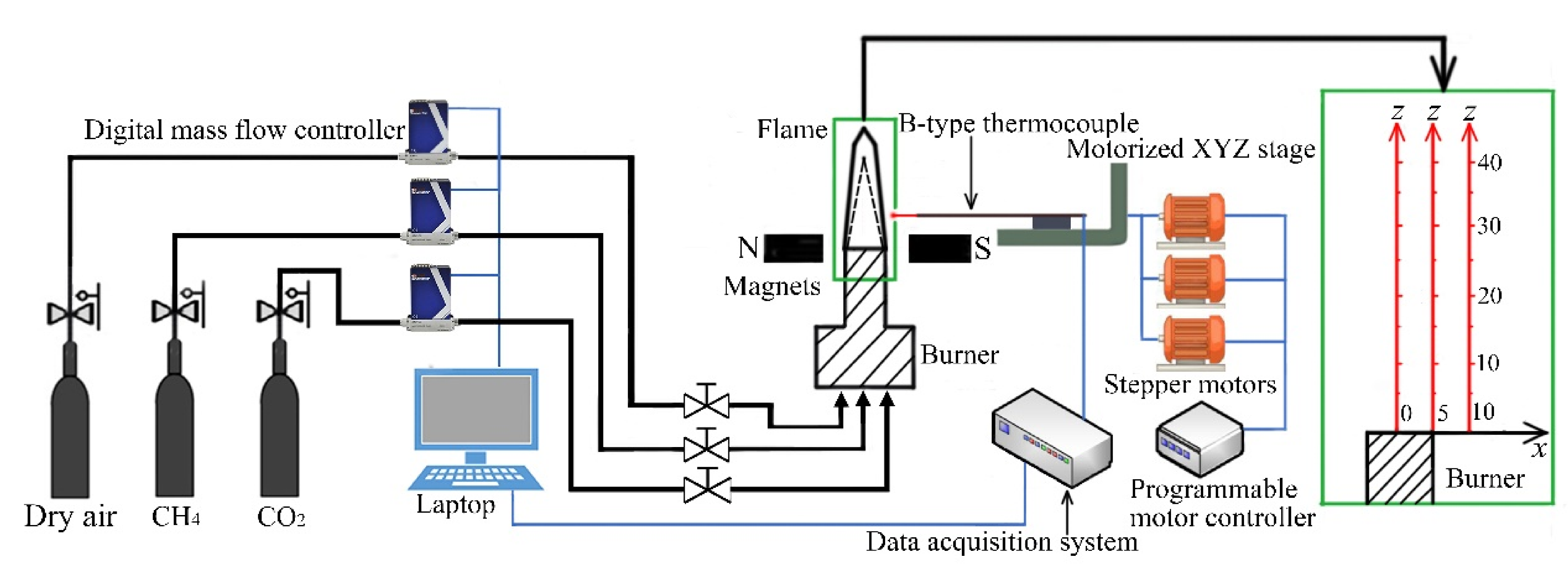
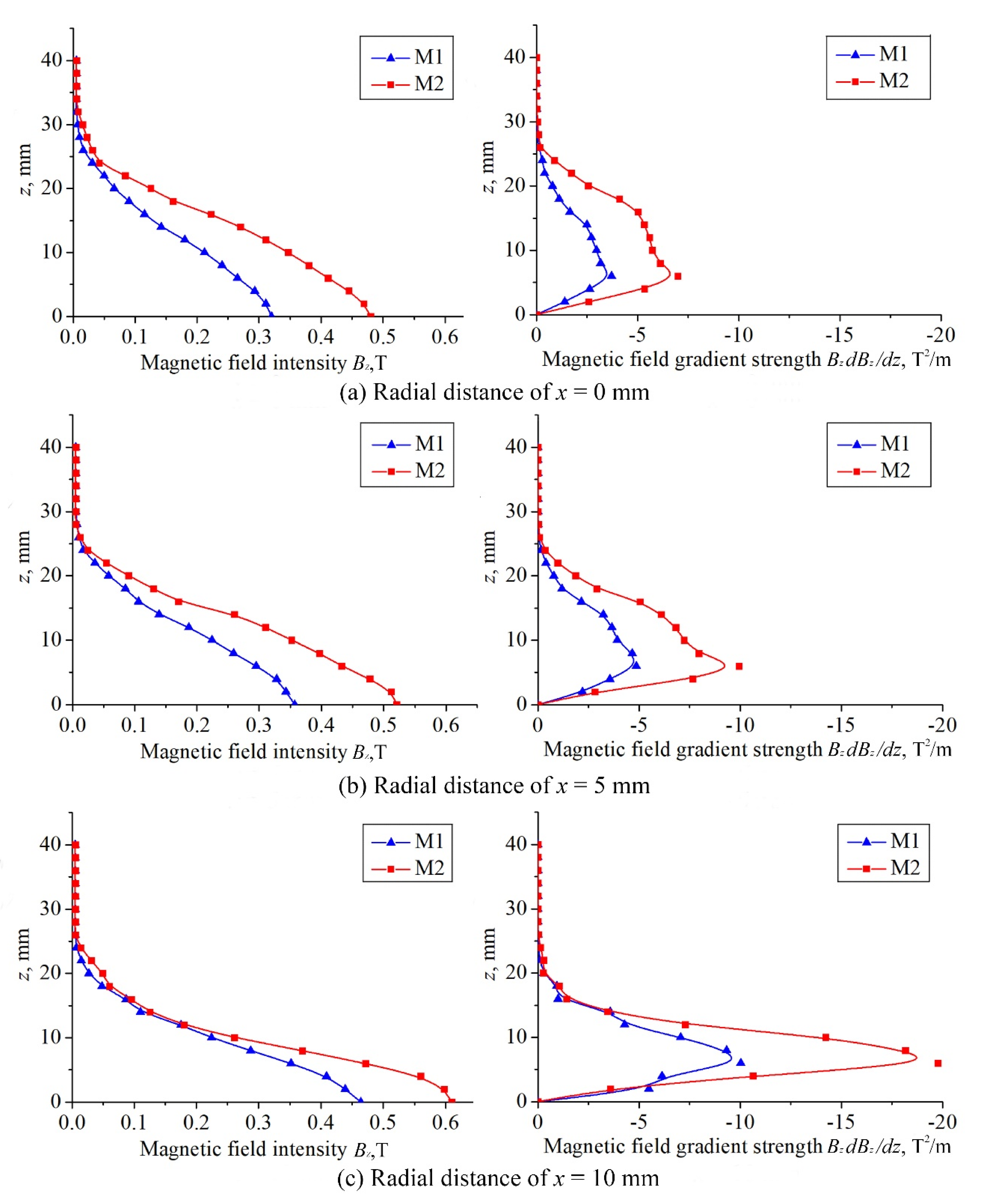
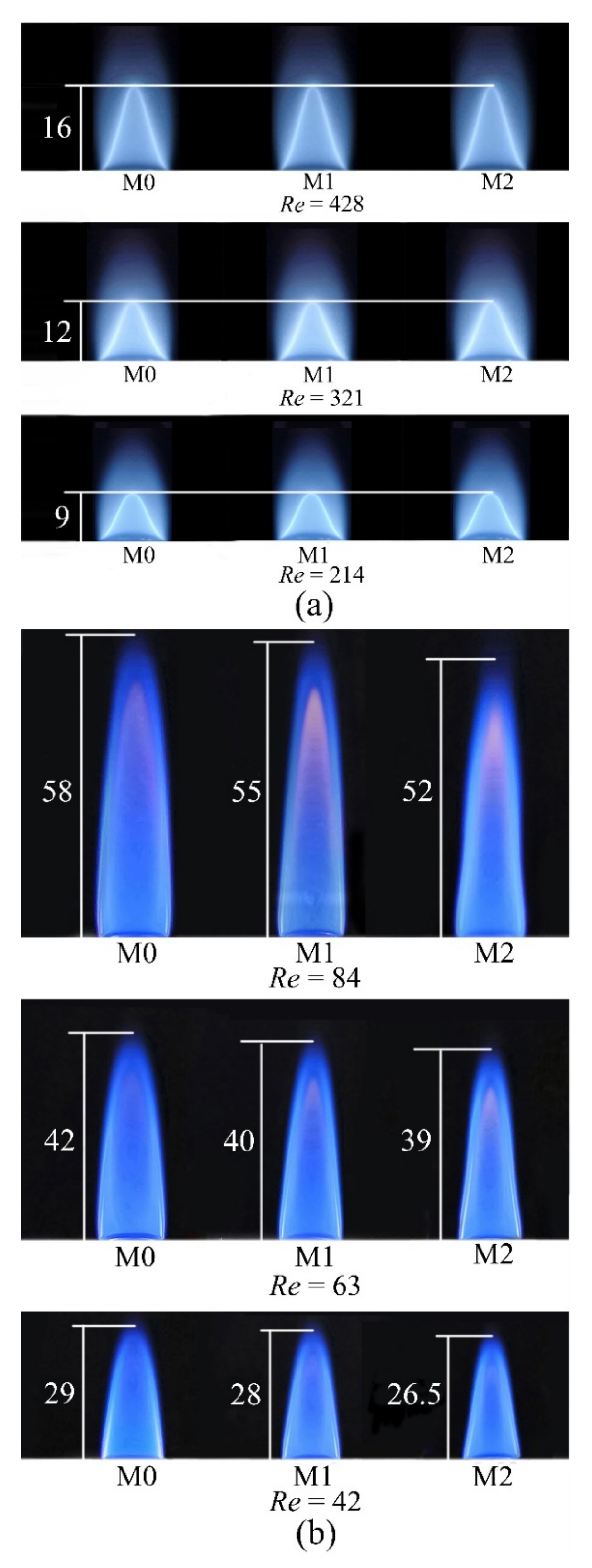
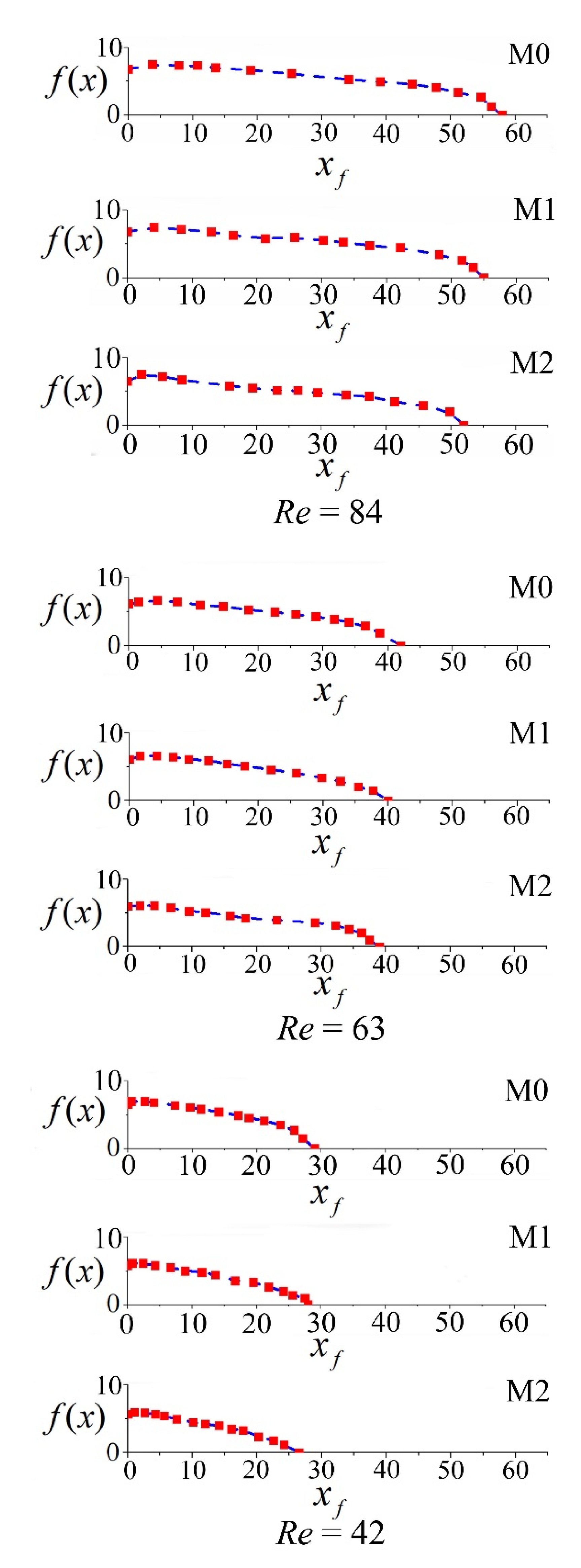
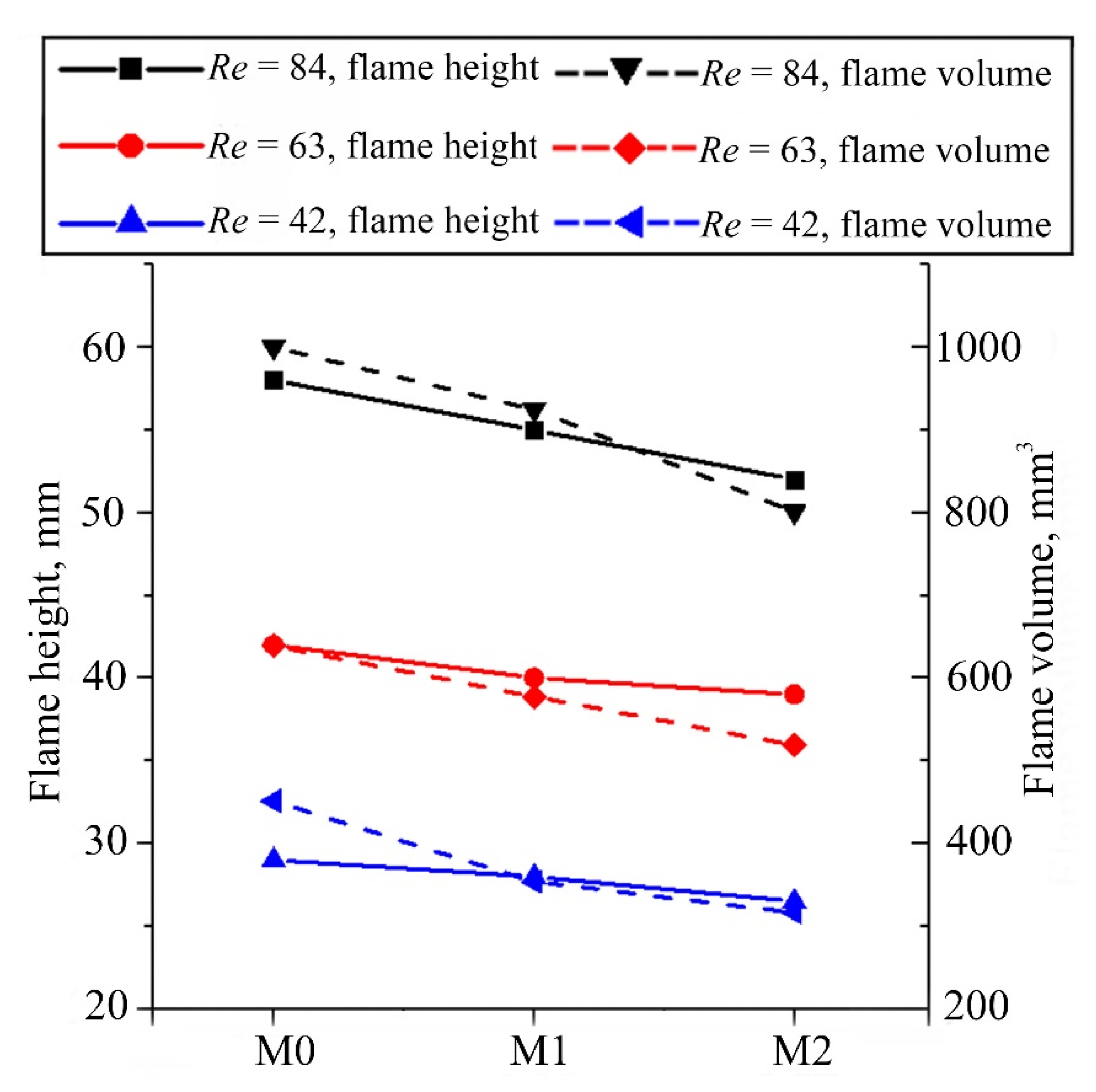

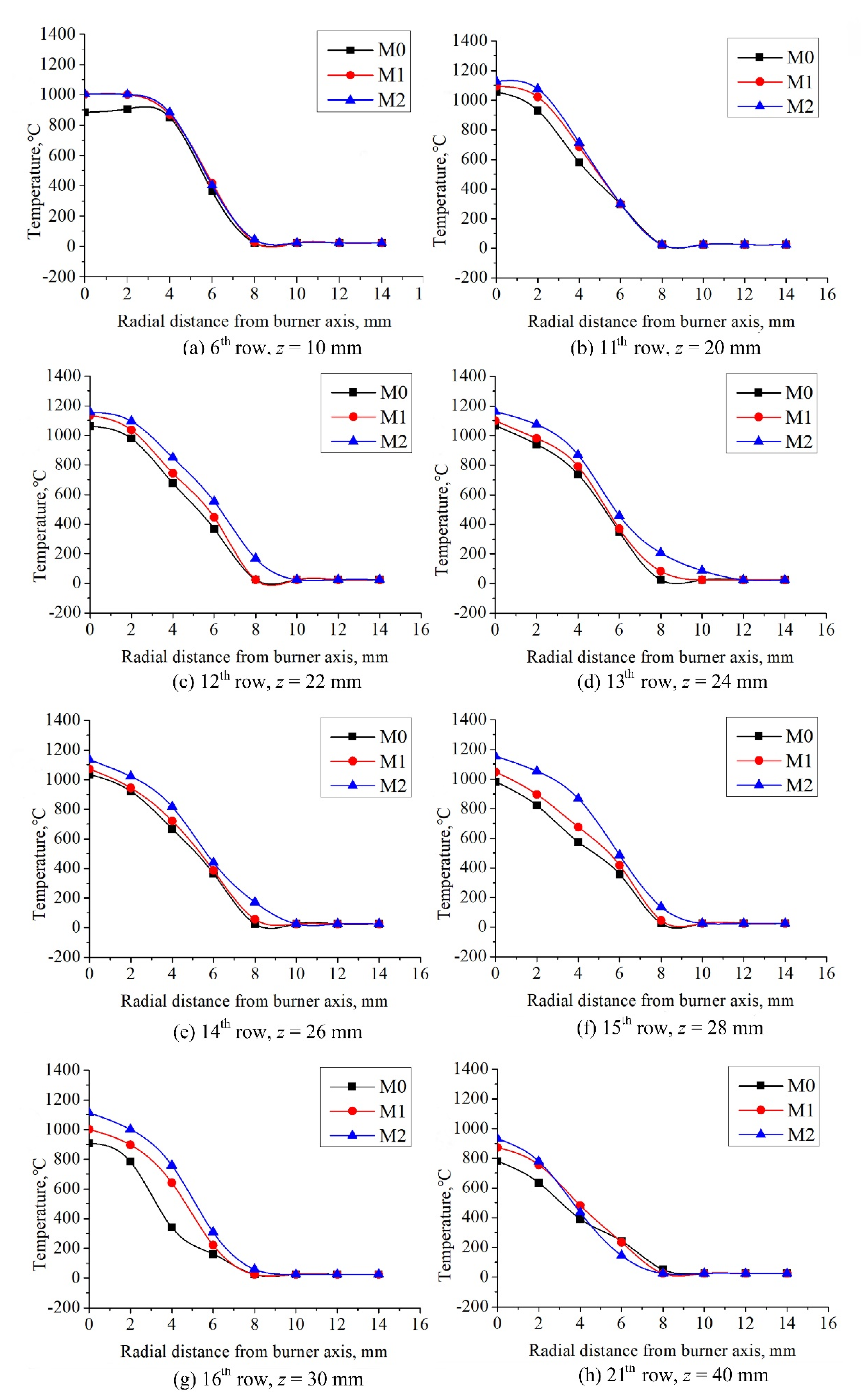
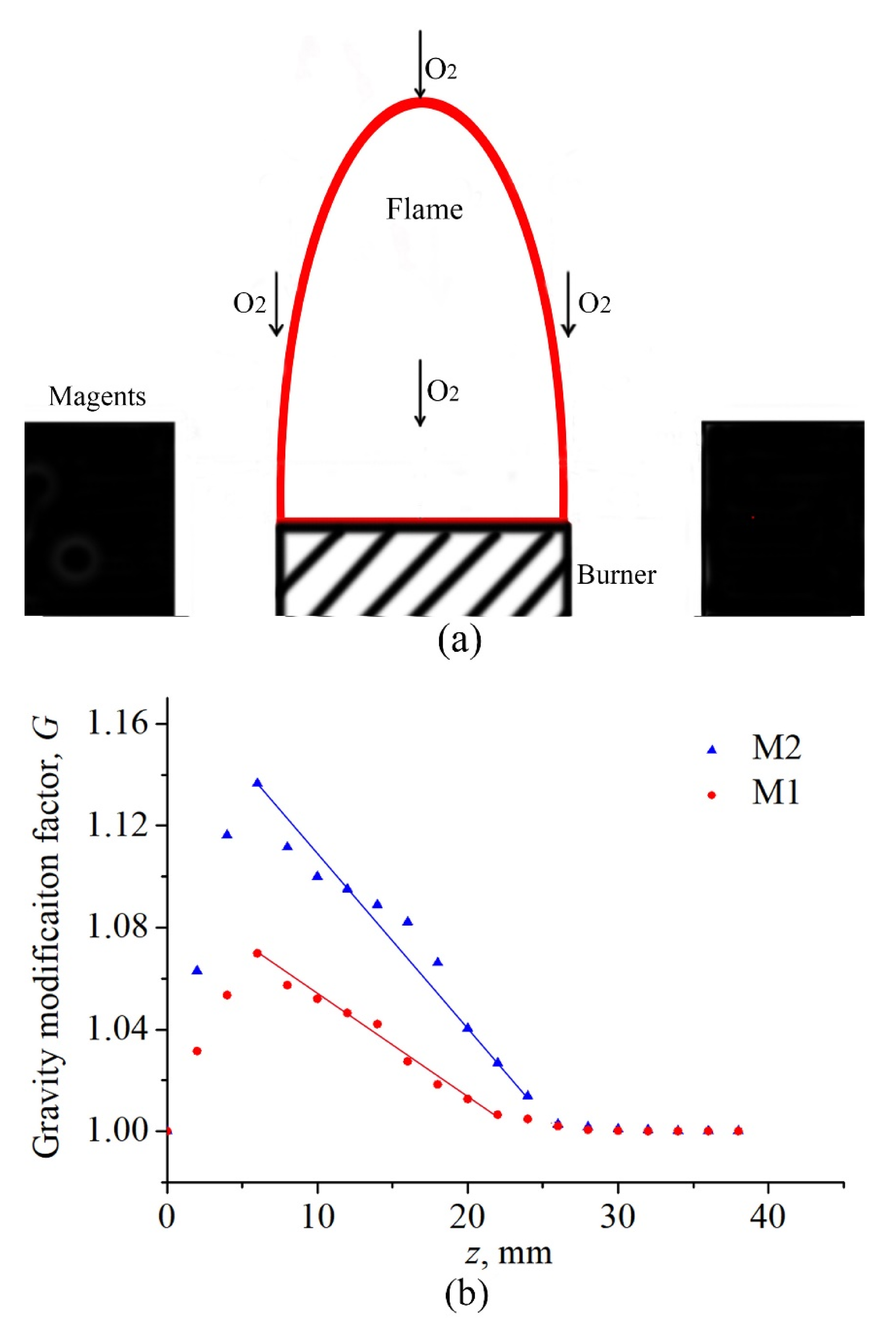
| Types of Small Flames | Reynolds Number | BG60 Flow Rate (L/min) | Mean Exit Flow Velocity (cm/s) | |
|---|---|---|---|---|
| CH4 | CO2 | |||
| Premixed flame (Φ = 1) | 428 | 0.24 | 0.16 | 57.0 |
| 321 | 0.18 | 0.12 | 42.7 | |
| 214 | 0.12 | 0.08 | 28.5 | |
| Diffusion flame | 84 | 0.24 | 0.16 | 8.49 |
| 63 | 0.18 | 0.12 | 6.37 | |
| 42 | 0.12 | 0.08 | 4.24 | |
Publisher’s Note: MDPI stays neutral with regard to jurisdictional claims in published maps and institutional affiliations. |
© 2021 by the authors. Licensee MDPI, Basel, Switzerland. This article is an open access article distributed under the terms and conditions of the Creative Commons Attribution (CC BY) license (https://creativecommons.org/licenses/by/4.0/).
Share and Cite
Xie, Y.; Wei, Z.; Zhou, T.; Zhen, H.; Liu, Z.; Huang, Z. Combustion Characteristics of Small Laminar Flames in an Upward Decreasing Magnetic Field. Energies 2021, 14, 1969. https://doi.org/10.3390/en14071969
Xie Y, Wei Z, Zhou T, Zhen H, Liu Z, Huang Z. Combustion Characteristics of Small Laminar Flames in an Upward Decreasing Magnetic Field. Energies. 2021; 14(7):1969. https://doi.org/10.3390/en14071969
Chicago/Turabian StyleXie, Yu, Zhilong Wei, Teng Zhou, Haishen Zhen, Zihao Liu, and Zuohuang Huang. 2021. "Combustion Characteristics of Small Laminar Flames in an Upward Decreasing Magnetic Field" Energies 14, no. 7: 1969. https://doi.org/10.3390/en14071969
APA StyleXie, Y., Wei, Z., Zhou, T., Zhen, H., Liu, Z., & Huang, Z. (2021). Combustion Characteristics of Small Laminar Flames in an Upward Decreasing Magnetic Field. Energies, 14(7), 1969. https://doi.org/10.3390/en14071969








